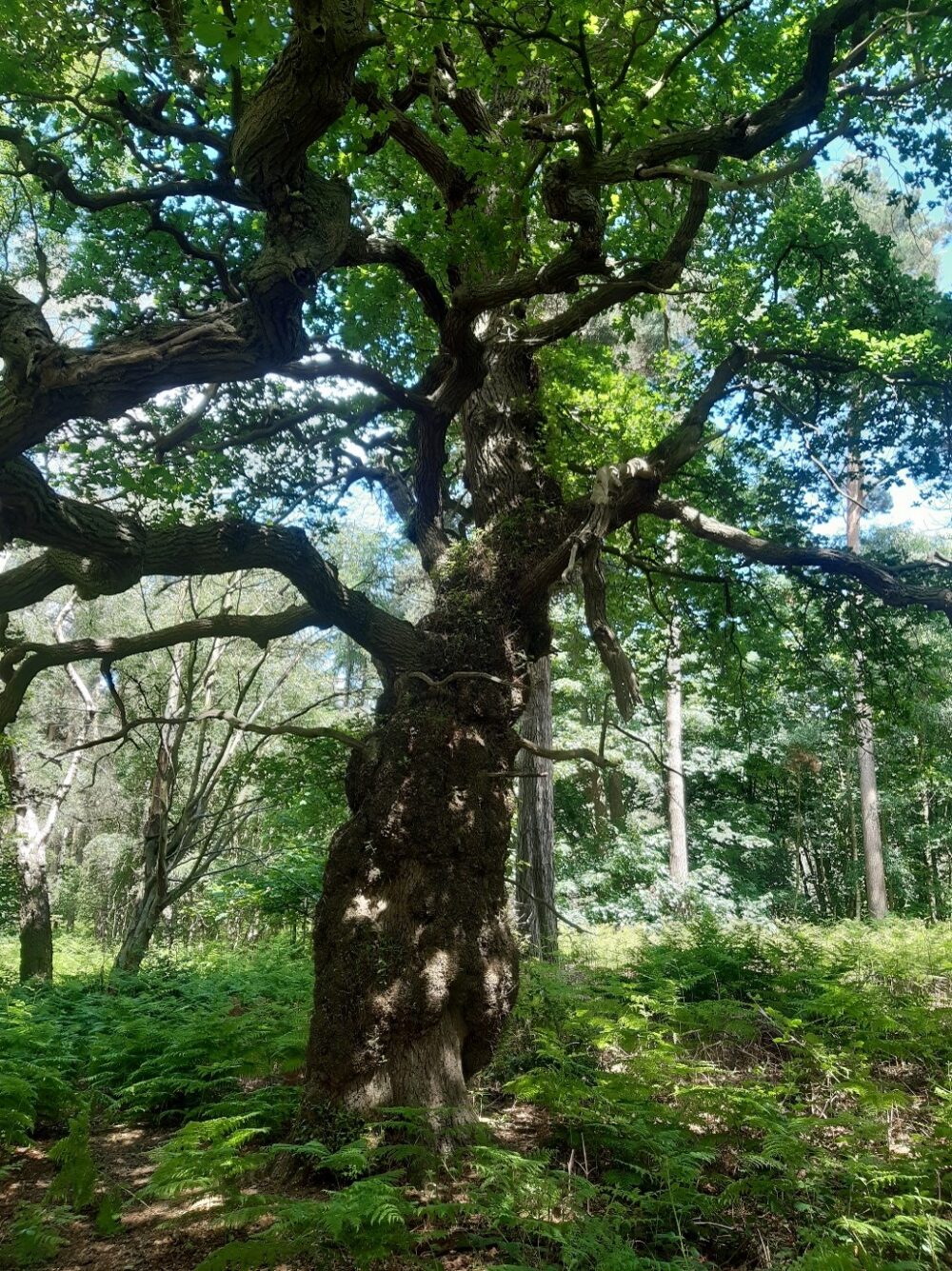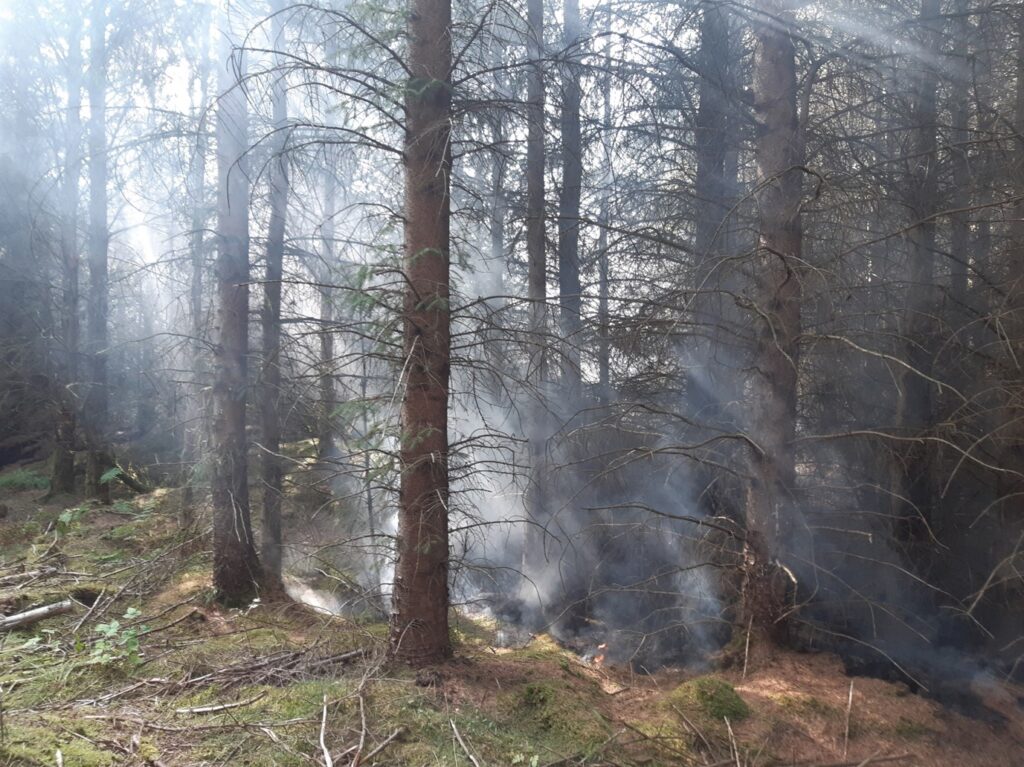Forest Fires
I have unfortunately now witnessed my first forest fire – albeit a relatively minor incident. The drought conditions have created problems. Having discussed the slight smell of smoke with the gamekeeper on the Monday and unable to locate the source, it wasn’t until the Friday that the gamekeeper discovered a flare up and called out the fire brigade.
Trespassing campers had evidently left embers of a fire that had smouldered through the needle layer and under the roots. The survival of the restock will likely be lower than expected as a result. Fire risk is evidently something that is going to increase in importance over the coming years.
Timber Harvesting
Forestry management requires a careful balancing act between financial gain and environmental sustainability. The goal of growing the best quality timber within a site’s parameters is not the only challenge. It provides the justification, necessity and funding for the management of a much wider land unit that often goes unnoticed by the general public.
Most people can grasp the idea of woodlands capturing and storing carbon, but the idea that these same trees need to be felled, processed into durable products and the ground restocked seems to go unnoticed. The distinction between deforestation (images of illegal logging in the Amazon conjured up) and harvesting, needs to be recognised. The idea of a forest as a mosaic of habitat types and as a never-ending machine that provides carbon storage – both in the soil, growing trees and in the products we make from them needs to be acknowledged if we are to move towards a wood-based culture and achieve net zero.
Hidden Gems
Without our sustainable commercial forests, some of the hidden gems I have stumbled across whilst surveying and marking felling boundaries may never have existed or have been preserved.
I would like to share with you some of my favourite gems – veteran Yew and Oak trees now hundreds of years old.
I feel privileged to be in a career that enables me to enjoy these magnificent trees.
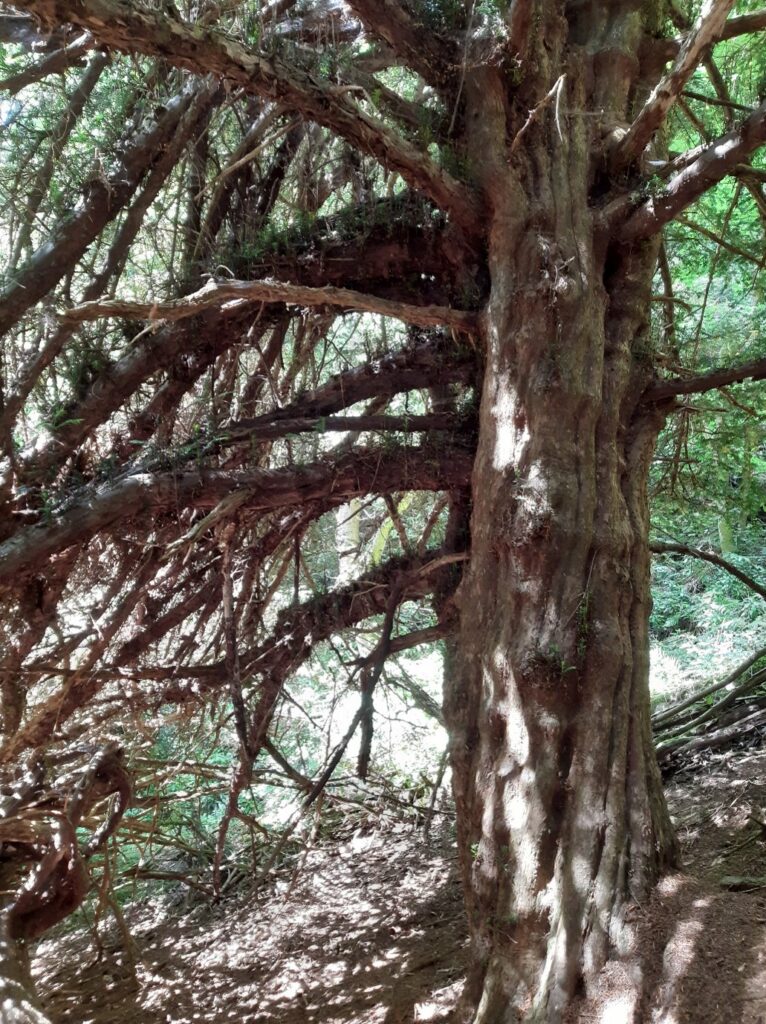
Veteran Yew Tree
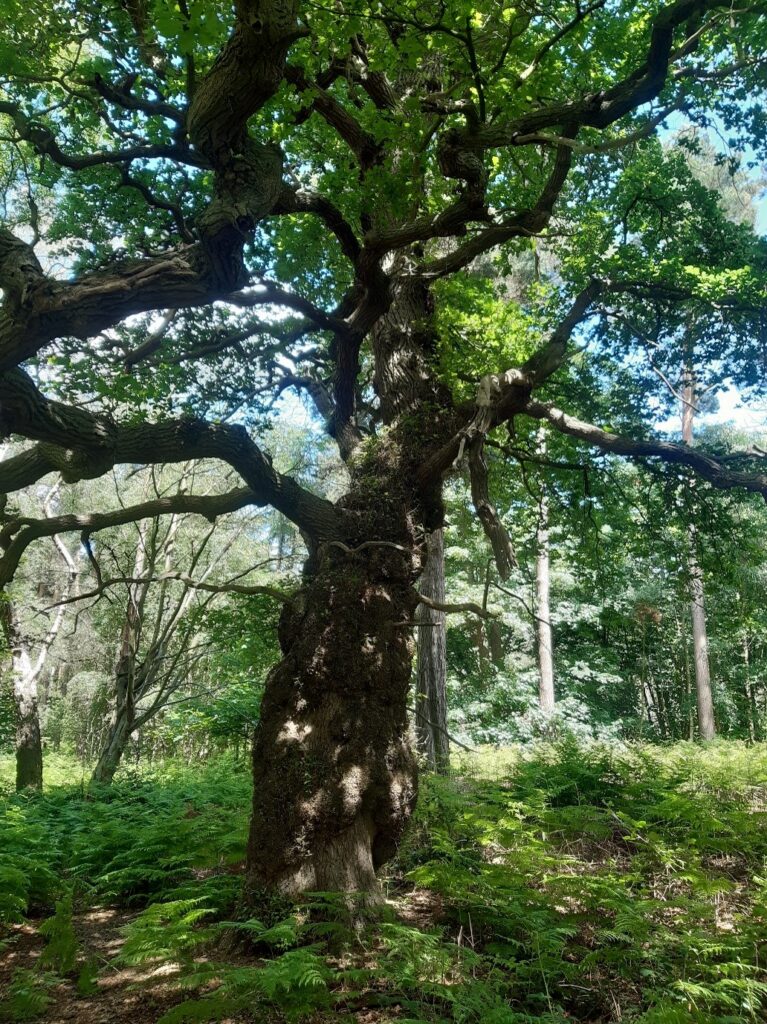
Veteran Oak Tree
A Blog by Jay Williams
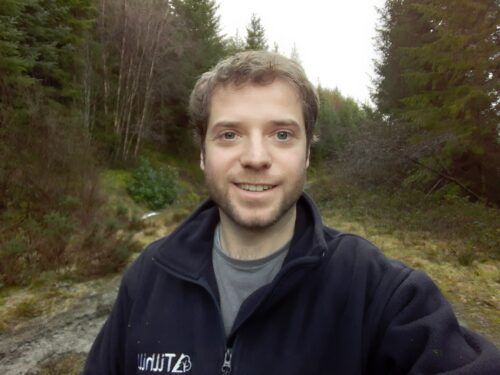
Assistant Forest Manager
Find out moreWant to join the Tilhill Graduate Programme?
Join Jay Williams as an Assistant Forest Manager and start your career with a forestry job.

Join the forestry graduate programme
Tilhill is seeking graduates with drive, passion and enthusiasm who are interested in a career within the forest sector with the industry’s leading company.
Find out moreWant to read more about jobs in forestry?
Tilhill offers excellent blogs and articles written by our forest and woodland managers.

Find out about the forestry jobs on offer
Read about the diverse life of a Forest Manager across Scotland, Wales and England and what a forestry job entails.
Find out more


